
table of contents
- Hanging flowering plants
- Semi-hanging flowering plants
- Drought-resistant flowering plants
- Green plants
- Crops
- frequently asked Questions
A hanging basket creates a summery atmosphere at a lofty height. Not only hanging plants are suitable for hanging baskets, but also drought-resistant summer flowers or edible crops. There is a large selection of plant species.
In a nutshell
- Geraniums and petunias are popular hanging plants
- prefer hanging varieties
- water frequently
- flowering traffic light plants need sunny places
- Green plants tend to prefer partially shaded to shady locations
Hanging flowering plants
Hanging geraniums (Pelargonium peltatum hybrid)
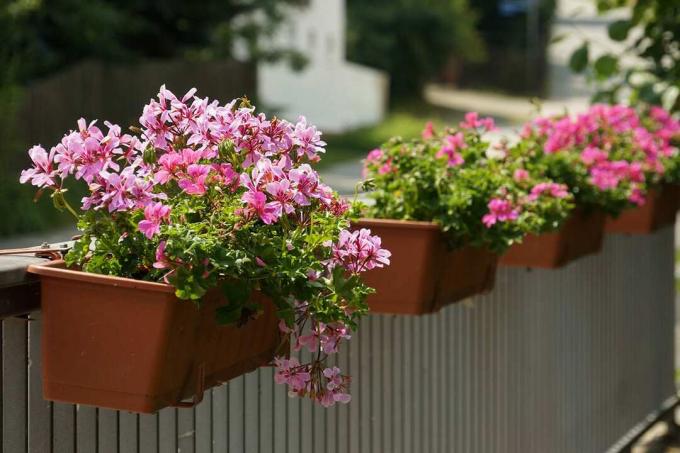
- Length: up to 100 cm
- Flowers: simple, double
- Color: white, red, purple, pink, multi-colored
- Leaves: ivy-like, lobed
- Care: high water requirement, fertilize regularly
- Propagation via cuttings possible
Petunia (petunia)

- Length: up to 100 cm
- Flowers: simple, double, funnel-shaped
- Color: white, red, purple, pink, yellow, orange, multi-colored
- Leaves: dark green, entire, slightly hairy
- Care: location in full sun, high water requirement, regular fertilization promotes flower formation
- persistent flowering over the entire length
Schiefeller (Achimenes)
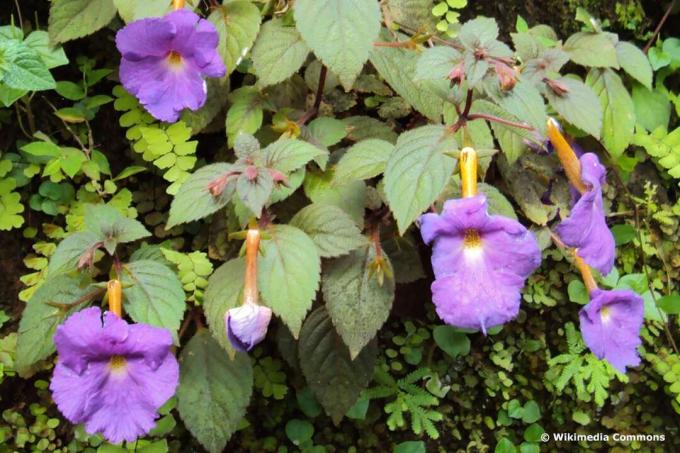
- Length: up to 80 cm
- Flowers: simple
- Color: pink, purple
- Leaves: ovate, pointed, serrate
- Care: high water requirement, fertilize every 14 days
- perennial
- how dahlias hibernate frost-free as a rhizome
Snowflake flower (Chaenostoma cordatum)
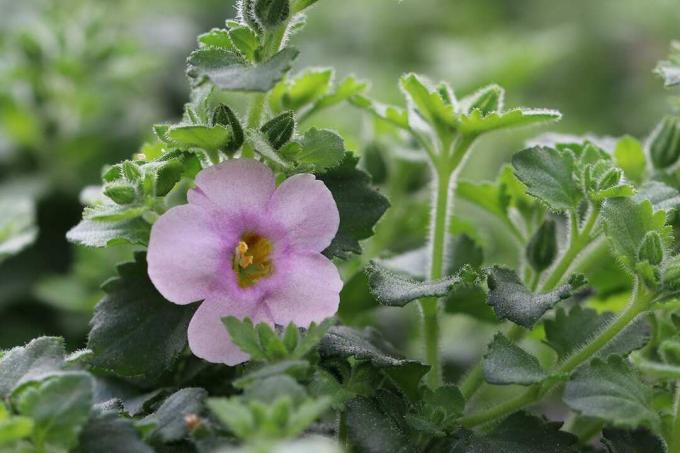
- Length: up to 60 cm
- Flowers: simple, funnel-shaped
- Color: soft pink
- Leaves: hairy, serrate, oval
- Care: easy to care for, not sensitive to weather
Note: The snowflake is not yet widespread, but its easy-care properties make it an ideal plant when there is little time to care for it.
Split flower (schizanthus)

- Length: up to 100 cm
- Flowers: simple, partially deeply slit
- Color: white, purple, pink, mostly multi-colored
- Leaves: pinnate
- Care: prefer partial shade, prone to aphids
- fast growing
Magic bells (Calibrachoa)

- Length: 40 - 60 cm
- Flowers: funnel-shaped
- Color: white, yellow, pink, purple, orange, blue, multi-colored
- Leaves: hairy, linear, tapering to a point
- Care: regular fertilizers promote flower formation, sensitive to lime, keep moderately moist
Note: The magic bell is not directly related to the petunias, although they have similar flower shapes. In terms of care, the magic bell is a little more undemanding than the petunias.
Semi-hanging flowering plants
Blue Mauritius (Convolvulus sabatius)

- Length: 20 - 50 cm
- Flowers: funnel-shaped
- Colour blue
- Leaves: oval
- Care: low in lime, avoid waterlogging, fertilize regularly
- expensive to maintain
- is sensitive to waterlogging
Blue fan flower (Scaevola aemula)

- Length: 30 - 50 cm
- Flowers: fan-like
- Color: purple, blue
- Leaves: ovate
- Care: soil rich in nutrients, keep slightly moist
- fertilize every two to three weeks
Hanging begonia (Begonia tuberhybrida)

- Length: 20-30 cm
- Flowers: simple to double
- Color: white, yellow, pink, red
- Leaves: thick, dark green, serrate on the edge
- Care: soil rich in nutrients, permeable
Great periwinkle (Vinca major)

- Length: up to 30 cm
- Flowers: small, funnel-shaped
- Color: blue-purple, white
- Leaves: oval, leathery
- Care: shady locations preferred, water regularly, fertilize moderately
- belongs to the evergreen plant species
- Protect the root ball from frost
Loyal to men (Lobelia)

- Length: 15 - 35 cm
- Flowers: small, simple, dense
- Color: blue, purple, white, multi-colored
- Leaves: lanceolate
- Care: cut back after the first flowering, lime-tolerant, nutrient-rich
- suitable for partially shaded places
Drought-resistant flowering plants
Blue Daisy (Brachyscome iberidifolia)

- Length: 30 - 50 cm, upright growth
- Flowers: simple, similar to daisies
- Color: blue, white, pink
- Leaves: fine, linear
- Care: water moderately
- Regularly remove dead inflorescences
Fuchsia (Fuchsia)

- Length: up to 30 cm
- Flowers: bell-shaped, pendulous
- Color: white, pink, purple, red, multi-colored
- Leaves: lanceolate
- Care: fertilize regularly, keep moderately moist, preferred sunny locations
- only hanging varieties are suitable for hanging baskets
Purslane florets (Portulaca grandiflora)

- Length: up to 20 cm, slightly overhanging
- Flowers: open, star-shaped
- Color: white, pink, red, orange, multicolored
- Leaves: lanceolate, succulent
- Care: fertilize moderately, water occasionally, need full sun locations
- tolerates dry periods
Convertible rose (Lantana)

- Length: up to 30 cm
- Flowers: simple, grouped in umbels
- Color: white, pink, orange, red, multi-colored
- Leaves: ovate, serrate
- Care: preferred nutrient-rich soil, moderate watering, lime-tolerant
- can be overwintered cool
Hussar button (Sanvitalia procumbens)

- Length: 15-20 cm, forms cushion
- Flowers: simple
- Color yellow
- Leaves: oval
- Care: water and fertilize moderately
- tolerates full sun locations
Two-toothed tooth (Bidens ferulifolia)

- Length: 15 - 30 cm, forms more of a cushion
- Flowers: simple
- Color yellow
- Leaves: pinnate
- Care: humus substrate, fertilize regularly, water moderately
Green plants
Ivy (Hedera helix)
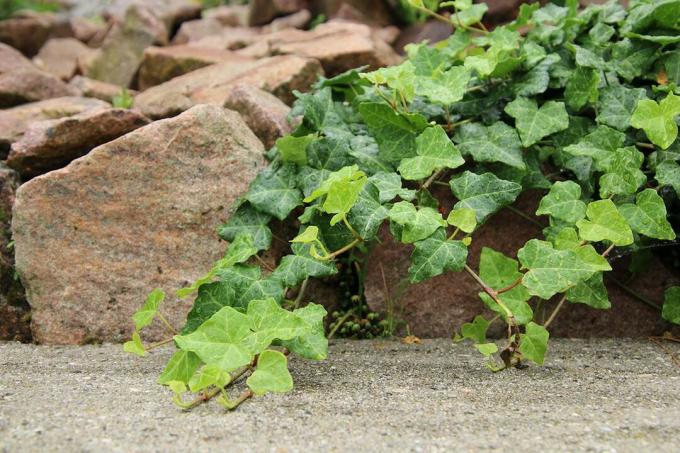
- Length: several meters, without cutting back
- Flowers: simple, grouped in umbels
- Color: light green to yellowish
- Leaves: three-lobed
- Care: keep moderately moist, fertilize the substrate regularly
Tip: Multi-colored ivy species are particularly suitable for the hanging basket. They are perennial and easy to overwinter outdoors.
Efeutute (Epipremnum pinnatum)

- Length: up to 200 cm
- Flowers: rarely blooms
- Color white
- Leaves: ovate, tapering to a point, green-yellow
- Care: Avoid waterlogging, is also suitable as a houseplant
Note: Spray the ivy, regardless of whether it is in the open air or is cultivated as a houseplant in winter, with water that is low in lime if the drought persists.
Antler fern (Platycerium bifurcatum)
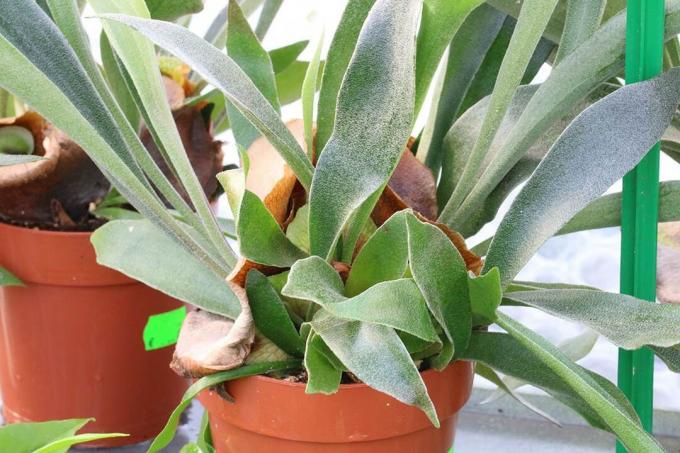
- Length: up to 100 cm
- Flowers: does not form a flower
- Colour: -
- Leaves: antler-like
- Care: sensitive to lime, needs a slightly acidic soil, moderately rich in nutrients
- suitable for partially shaded to shady locations
Candlestick flower (Ceropegia woodii)

- Length: up to 100 cm
- Flowers: small single flowers, rarely blooms
- Color: Multicolour
- Leaves: heart-shaped, delicate, green-whitish
- Care: needs nutrient-rich substrate, watering moderately
Zebra herb (Tradescantia zebrina)

- Length: up to 30 cm
- Flowers: small single flowers, cup-shaped, rarely blooms
- Color: white, pink
- Leaves: oval, tapering, green-white striped
- Care: sensitive to lime, high nutrient requirements, partial shade preferred
- suitable as a houseplant
- slow growth
Crops
Pear melon (Solanum muricatum)

- Length: up to 30 cm
- Flowers: simple, slightly funnel-shaped
- Color: white to blue
- Leaves: narrow, pointed, dark green
- Care: needs full sun locations, protected location is an advantage, watering regularly and thoroughly
- suitable for fresh consumption
Hanging strawberries (Fragaria)
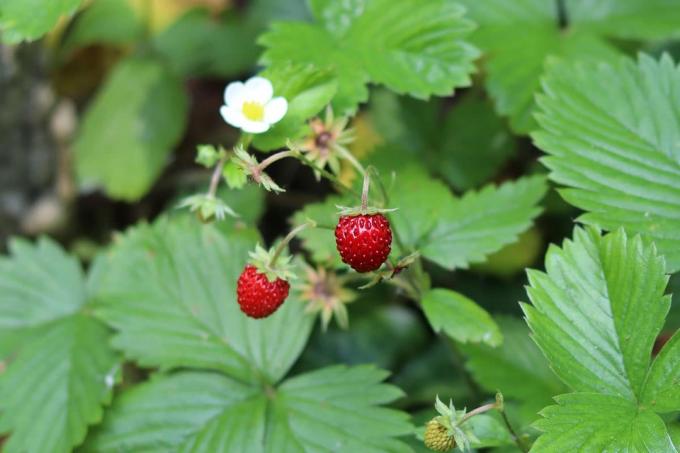
- Length: up to 20 cm
- Flowers: simple
- Color white
- Leaves: tripartite, serrated
- Care: in full sun, water and fertilize regularly
- Choose varieties that bear several times
Great nasturtium (Tropaeolum majus)

- Length: up to 50 cm
- Flowers: funnel-shaped, rarely double
- Color: orange, red
- Leaves: lobed
- Care: sunny to partially shaded, high water requirement, fertilize every four weeks
- prone to Aphids
frequently asked Questions
No, plants like the hussar's head are ideal hanging plants that require little care. They do not grow overhanging, but can be combined very well with other hanging plant species.
Plants in the hanging basket that are frost-resistant are removed in autumn. The plants are placed on an insulating surface, such as a board or a styrofoam sheet. Perennial plant species that are not frost-resistant are protected and overwintered in the house. In winter, make sure to water the plants outdoors on frost-free days.
Some species benefit from pruning after the first flowering. Varieties like the petunia are permanent bloomers, from which you can pluck off the maximum number of dead flowers. However, you can trim down plants like ivy if it's too long for you.
